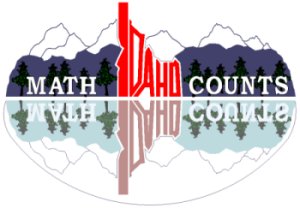|















| |
Idaho Society of Professional
Engineers
Friday Update – 01/07/11
What’s Inside:
•
Upcoming Events
• Earn 1.5 PDH – Codes, Standards
and Building Permits
• Call For ISPE
Award Nominations
• MATHCOUNTS Problem of the Week
UPCOMING EVENTS:
 |
January 18, 2011 -
ISPE Southwest Chapter January Meeting - 12:00 Noon - Jeremy Kroll
- The Hartwell Corporation - "Risk Drivers: Understanding the Dynamics of Risk
in the A/E Industry" - URS Corporation Training Room |
 |
January 19, 2011 – Codes, Standards, and Building Permits – Lynn
Transtrum, City of Pocatello Building Department - 7:00 pm - 2nd floor of
Portneuf Valley Brewing, 615 S 1st Avenue, Pocatello
EARN 1.5 PDH |
 |
January 22, 1011 - 7th
Idaho Regional Future City National Engineers Week Competition - Boise
State University - Jordan Ballroom |
 |
February 10, 2011 -
ISPE Northern Chapter
MATHCOUNTS competition - North Idaho College, Coeur d'Alene |
 |
February 15, 2010 -
ISPE Magic Valley Chapter
MATHCOUNTS competition - Twin Falls City Hall, Twin Falls |
 |
February 20-26, 2011 -
National Engineers Week |
 |
February 26, 2011 -
ISPE Southeast Chapter
MATHCOUNTS competition - Idaho State University, Pocatello |
 |
February 26, 2011 -
ISPE Southwest Chapter
MATHCOUNTS competition - Boise State University, Boise |
 |
March 12, 2011 -
ISPE State
MATHCOUNTS competition - Boise State University, Boise |
 |
April 26-27, 2011 -
2011 Project Development Conference - Boise Centre on the Grove - Boise ID
|
 |
April 29, 2011 -
ISPE Awards nomination deadline |
 |
May 6, 2011 -
National
MATHCOUNTS competition - Washington D.C. |
 |
June 9 & 10, 2011 -
ISPE 2011 Annual Meeting – Best Western Coeur d’Alene Inn, Coeur d'Alene, ID
|

EARN 1.5 PDH
Codes,
Standards and Building Permits
Lynn
Transtrum, City of Pocatello Building Department
Wednesday, January 19th at
7:00 pm on the 2nd
floor of Portneuf Valley Brewing, 615 S 1st Ave., Pocatello. You can
get a meal prior to, or at, the meeting.
What we’ll cover:
• When is a building permit required?
• What do they cost?
• What does the City expect in a submittal package?
• What is the City’s review criteria?
• What national codes and standards apply?
• Local codes, standards and zoning – are there any?
• What if my submittal is rejected – what next?
• Is there an appeal process?

CALL FOR ISPE AWARD NOMINATIONS
Each year ISPE selects outstanding Idahoans in recognition of their
engineering accomplishments and contributions to the engineering profession.
Awards will be presented on June 10, 2011 during the
2011 Annual Meeting in Coeur d'Alene. Nominations must be submitted no later
than April 29, 2011. Award criteria and
nomination forms, as well as lists of previous winners, can be obtained from the
ISPE web site,
or by contacting the ISPE office at 208-426-0636.
The awards for which we are looking for nominees include:
Idaho Engineering Hall of Fame: Given by ISPE to recognize
Idahoans that have made engineering contributions beyond Idaho i.e. nationally
or world wide.
Idaho Excellence in Engineering Award:
To recognize an Idahoan who is distinguishing themselves in engineering.
Idaho Excellence in Engineering Educator Award:
This award recognizes an Engineering Educator who has had a significant impact
on the engineering profession in Idaho.
Young Engineer of the Year Award: To
recognize an engineer that is making a contribution to their profession. Must be
no more than 35 years old.
Self nominations are welcomed and encouraged.

MATHCOUNTS PROBLEM OF THE WEEK
Can you solve this MATHCOUNTS problem? The answer will appear in the next
edition of the Friday Update!
Hot Shot!
Hot Shot is an arcade basketball game in which the object is to make as many
baskets as possible within the 60-second time limit. A player is awarded 2
points for each successful shot during the first 50 seconds of play and 3 points
per successful shot during the final 10 seconds.
Tyler had a bit of beginner’s luck in her first game scoring a total of 60
points. She wants to exceed this total in her second game. What is the minimum
number of baskets Tyler must make to earn a score greater than 60 points?
-------------------------------------------------------------------------------
Mitchell earned a total score of 55 points. Twenty percent of the baskets he
made were worth three-points each. If four-fifths of the two-point baskets
Mitchell attempted were successful and he made one-third of the three-point
baskets he attempted, what is the total number of baskets that Mitchell
attempted?
-------------------------------------------------------------------------------
Kyoka holds the world record for earning the most points in this arcade game
with a high score of 256 points. If Kyoka did not miss any of the 114 shots she
took to set this record, what percent of those shots were made during the final
10 seconds of the game? Express your answer to the nearest percent.
Answer to last problem:
Let T be the total number of tokens that Ariel and Thomas are using for the
game. Then to begin round 1 the pot has 2 tokens and Ariel and Thomas each have
T/2 – 1 tokens. At the end of the first round, Ariel places two of her tokens in
the pot, so there are a total of 4 tokens in the pot and Arial now has T/2 – 1 –
2 = T/2 – 3 tokens. The total number of tokens Thomas has remains unchanged.
At the end of the second round, Arial’s number of tokens increases by 2 since
she must take half of the 4 tokens in the pot. Thomas has to place two tokens in
the pot reducing his number of tokens to T/2 – 1 – 2 = T/2 – 3. Since Arial
takes two tokens from the pot and Thomas puts in two tokens, there are still a
total of 4 tokens in the pot.
At the end of the third round, Ariel’s number of tokens remains unchanged.
Thomas takes all 4 tokens from the pot which brings his number of tokens to T/2
– 3 + 4 = T/2 + 1. The four tokens in the pot are equivalent to 2/5 of the total
number of tokens in play. Therefore, (2/5)T = 4. Multiplying both sides of the
equation by 5/2 gives us T = 4(5/2) T =10. If the total number of tokens in
play is 10 then at the end of the third round, Thomas has T/2 + 1 = 10/2 + 1 = 5
+ 1 = 6 tokens.
-------------------------------------------------------------------------------
The first day of Christmas brings a gift with two legs.
On the second day the two turtle doves and new partridge bring another 6 legs so
there are 2 + 6 = 8 legs.
On the third day the new hens, turtle doves and partridge bring an additional 12
legs for a total of 8 + 12 = 20 legs.
The fourth day brings four calling birds and more hens, turtle doves and another
partridge with an additional 20 legs, for a grand total of 20 + 20 = 40 legs.
Every gift, but the golden rings, brings an additional pair of legs. That means
on the fifth day, the same number of legs are added as the on the fourth day for
a total of 40 + 20 = 60 legs.
On the sixth day six geese are added, plus more calling birds, hens, turtle
doves and another partridge. This group adds another 32 legs and the total
becomes 60 + 32 = 92 legs.
On the seventh day 7 swans plus more geese, calling birds, hens, turtle doves
and another partridge arrive adding 46 more legs. That brings the total number
of legs to 92 + 46 = 138.
On the eighth day 8 maids and more swans, geese, calling birds, hens, turtle
doves and another partridge join the group with an additional 62 legs. The total
now is 138 + 62 = 200 legs.
Therefore, it must be the eighth day of Christmas.
As with most problems there are a variety of ways this particular problem can be
solve. Here is one other solution.
If there are 200 legs, that is equivalent to some combination of 100 gifts of
people and birds. We should determine which is the first day when there are 100
gifts.
Day 1: 1 gift Day 5: 20 + 15 = 35 gifts
Day 2: 1 + 3 = 4 gifts Day 6: 35 + 21 = 56 gifts
Day 3: 4 + 6 = 10 gifts Day 7: 56 + 28 = 84 gifts
Day 4: 10 + 10 = 20 gifts Day 8: 84 + 36 = 120 gifts
Every gift, but the five golden rings, brings an additional pair of legs, so we
need to determine how many of the 120 gifts are golden rings. The rings were
given on days 5, 6, 7 and 8, for a total of 5(4) = 20 golden rings.
If we deduct that from the total we see that on the eighth day there are 100
gifts, each with a pair of legs.
-------------------------------------------------------------------------------
The bag contains five cards each with one of the letters I, M, A, N and i (let’s
use I and i to differentiate between the two Is in the bag). We start by finding
out how many combinations of 3 letters are possible, and then determine how many
of those contain the three letters in Nia. Since order is not important, there
are 5C3 = 5!/[(2!)(3!)] = (5 • 4)/(2 • 1) = 20/2 = 10 combinations of 3 letters
that can be selected from the bag.
One combination that works is N, I, A and the other is N, i, A. Therefore, the
probability of selecting the three letters in Nia is 2/10 = 1/5.
-------------------------------------------------------------------------------
In this case, order is important and there are 5P3 = 5!/2! = 5 • 4 • 3 = 60
arrangements of three letters chosen from the bag of five. Only two of the 60
selections work: N-I-A and N-i-A. Thus, the probability of selecting the three
letters of Nia in the correct order is 2/60 = 1/30.
If you want to see the problem again, click
http://mathcounts.org/Page.aspx?pid=1573 and choose the problem for December
13, 2010.
Idaho Society of Professional Engineers
PO Box 170239
Boise, ID 83717-0239
208-426-0636
Fax: 208-426-0639
E-Mail: ispe@idahospe.org
Web Site:
www.idahospe.org
| |

ISPE
MATHCOUNTS
Program

National Engineers Week - Future City Competition

Board of Professional Engineers and
Professional Land Surveyors
--News
Bulletins
--Meeting
Minutes


|
 Idaho
Society of Professional Engineers
Idaho
Society of Professional Engineers